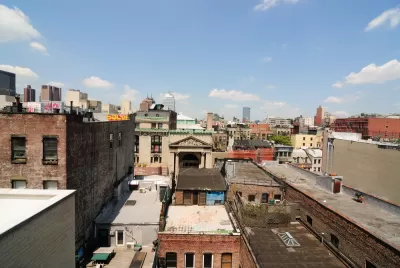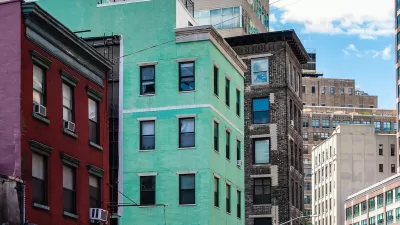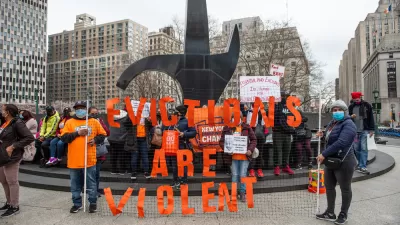Violations of the building code go unenforced in New York City.

Joe Anuta reports:
In April of 2016, Mayor Bill de Blasio signed three bills that were designed to help the city collect $1.6 billion in outstanding fines for everything from building code infractions to tickets from the sanitation department. But the latest figures indicate that the value of the city's claim has barely changed.
Earlier in the week, fines owed by landlords made related news, when the Associated Press reported that Kushner Cos. owe around $500,000 for building code violations, most of which the company racked up while President Trump's son-in-law was running the company.
Despite the celebrity associated with those fines, the city's problem is much, much larger.
"The city struggles to collect fines for several reasons," according to Anuta. "But in general, scofflaws have little incentive to cough up the cash. Most of the violations are issued by the city's Department of Buildings to landlords and developers who typically own property through limited-liability companies and treat the fines as part of doing business. Owners can typically continue to obtain permits for work from the city regardless of their balance, and the statute of limitations on the fines expires after eight years."
Compared to landlord Steve Croman, who owes $1 million in fines, Kushner Cos. isn't even the worst offender.
FULL STORY: Kushner's got company: Despite new laws, city fails to collect $1.5B in fines

Planetizen Federal Action Tracker
A weekly monitor of how Trump’s orders and actions are impacting planners and planning in America.

Maui's Vacation Rental Debate Turns Ugly
Verbal attacks, misinformation campaigns and fistfights plague a high-stakes debate to convert thousands of vacation rentals into long-term housing.

Restaurant Patios Were a Pandemic Win — Why Were They so Hard to Keep?
Social distancing requirements and changes in travel patterns prompted cities to pilot new uses for street and sidewalk space. Then it got complicated.

In California Battle of Housing vs. Environment, Housing Just Won
A new state law significantly limits the power of CEQA, an environmental review law that served as a powerful tool for blocking new development.

Boulder Eliminates Parking Minimums Citywide
Officials estimate the cost of building a single underground parking space at up to $100,000.

Orange County, Florida Adopts Largest US “Sprawl Repair” Code
The ‘Orange Code’ seeks to rectify decades of sprawl-inducing, car-oriented development.
Urban Design for Planners 1: Software Tools
This six-course series explores essential urban design concepts using open source software and equips planners with the tools they need to participate fully in the urban design process.
Planning for Universal Design
Learn the tools for implementing Universal Design in planning regulations.
Heyer Gruel & Associates PA
JM Goldson LLC
Custer County Colorado
City of Camden Redevelopment Agency
City of Astoria
Transportation Research & Education Center (TREC) at Portland State University
Jefferson Parish Government
Camden Redevelopment Agency
City of Claremont





























